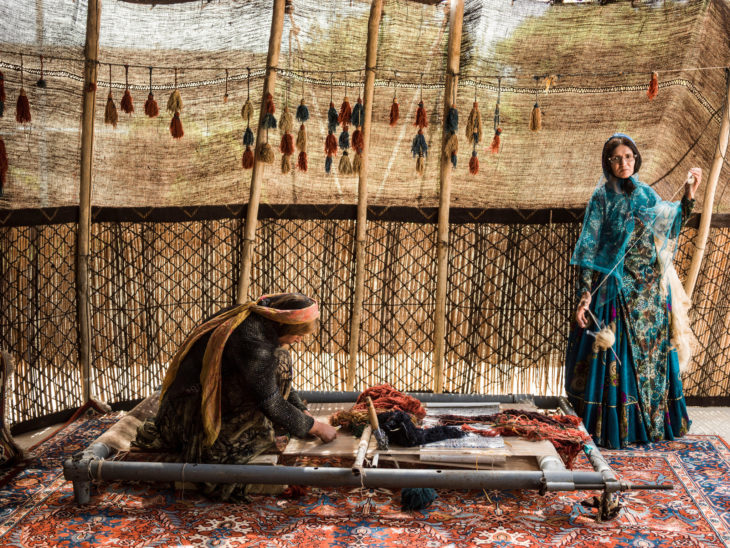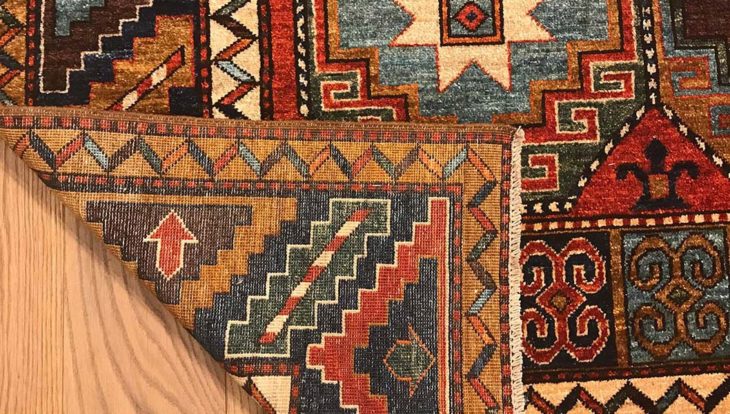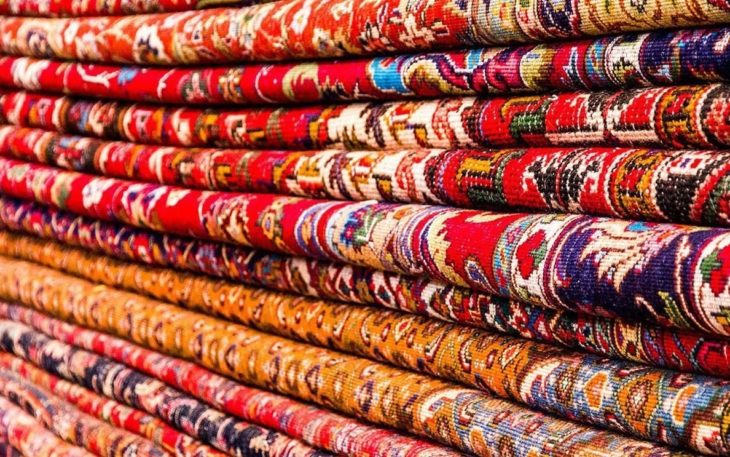Through widespread usage and a lack of attention to detail, the terms Persian rugs and Oriental rugs have become synonymous. You will find most rug merchants describe themselves as either Oriental or Persian rug dealers and, on occasion, both. But there is no distinction in the type of end handmade product. However, strictly speaking, a Persian rug is made in Persia, which is the old name of Iran. The term Oriental rug can describe rugs from the other leading handmade rug weaving countries, which include Morocco across to Egypt, and then in a geographical arc which comprises Turkey, Turkmenistan, Afghanistan, the Caucasus, Pakistan, Kashmir, Nepal, India, Tibet, and China.
Contents
Genuine Persian Rugs

Source: nytimes
The most expensive and enduring rugs are woven entirely by hand and are an authentic artisan item. If the buyer is an individual who desires to own the ‘genuine’ article, then he must know a Persian rug will always be made in Iran and be able to spot counterfeits if buying without the services of an expert. However, a smart person will ask from advice from a trustworthy professional Persian rug dealer who can immediately spot the real thing from counterfeits. Be aware, in the rug business. There are not insignificant numbers of sellers who are only too happy to take advantage of Joe Publics’ lack of expertise. If you do decide to go it alone, the following advice will help you determine when a rug is not a genuine hand-woven Persian rug.
You’ll find Persian rugs available in a huge variety of designs and colors, but all share these mutual attributes which, once you are aware of them, are simple to spot. Niels Larsson of “Persian And Modern Rugs“, an expert in Persian rugs for over 30 years, gives us an insight into what to look for and the different types of rugs available to buy online nowadays.
1. When considering a rug, the first thing to do is look at the back. A hand-knotted rug’s design is identical to the front of the carpet, the only difference be being it lacks the pile and is flat. While this is a good started point, it is not the only factor you should be looking out for because modern rug-making machines can reproduce this feature pretty well.
2. The genuine article will unfailingly feature fringes at each end of the rug, which are the ends of the “warp threads,” which the weaver ties the knots round, which is done one by one lengthwise until each row is complete.
3. When a length row has been woven, a rug weaver separates the warp threads and inserts a “weft thread”, which runs width wise. He compresses in with a kind of fork, which secures the width row in tightly. With an authentic hand-knotted item, you can spot the weft threads running across the rug. They are usually white or cream, or a light shade of blue.
4. The narrow weft thread is also visible on a machine-made rug, but it runs the length of the rug.
5. Authentic Persian and Oriental rugs are produced in many sizes but not a wide variety of shapes. An unusually shaped rug such as hexagonal is very unlikely to be Persian.
The back of a hand-knotted Persian rug clearly shows the design

Source: artsyrugs
Kashan Rugs
The demand for beautiful Persian and Oriental rugs is high, and to make the most of this commercial opportunity. Oriental rug manufacturers are reproducing Persian rugs so a homeowner can buy a copycat Persian ‘Kashan’ rug from India or Pakistan, or indeed, any of the other countries previously listed.
Unless the buyer is an experienced expert on rugs, as a layman, he must trust the seller. Whether contact is made online, in a showroom, or marketplace, a seller can easily be untruthful about the authenticity of the item. Unscrupulous sellers will ask for a price that reflects that of a genuine Persian rug when it is not. The real value of a Kashan “Persian” rug is notably lower than the same size definite article from Iran.
The intricately designed corner of a Kashan rug
Having said, an Indian or Tibetan Kashan rug may not be inferior to the original, but usually, the copies, although skilfully made, never really have the same opulent feel as an authentic Persian rug. This is especially true with regards to Persian rug designs manufactured in China, which even to the non-experienced buyer have a rather flat and relatively uninteresting aspect.
There are many excellent imitation productions of Persian rugs made in Turkey, Pakistan, Afghanistan, and India of superb craftsmanship and quality. These are, strictly speaking, Oriental rugs, but in reality, they are Persian rugs in all but name.
Nowadays, the price of fine hand-woven Persian and Oriental rugs is very similar, but buying a Kashan rug is a popular option for the less wealthy. Featuring stunning designs and colors, they are the ideal solution for a buyer who may be on a budget, as they offer the chance to furnish his home with a delightful antique Persian rug reproduction without having to dig too deeply into his pocket. The price of any rug should mainly reflect how long it took to produce the item, as well as the quality of the dyes and material used.
The layman buyer must pay close attention to the merchants’ description and understand they are opting for a copy when purchasing a Kashan. And a copy is a copy, no matter how exquisite and artistic it may look.
Machine Made Rugs
Machine-made rugs are easy and cheap to manufacture and require no human intervention other than handling the machine. The design is produced via a computer program. Machine rugs are usually run off in huge sheets, which are then cut to size and sometimes finished off with a fake fringe to make them look more like the genuine Persian version. If you look at the back of the rug, you can see the outline of the front design, but unlike the real thing, it will not be visible but indistinct. The white or cream weft thread will run the length of the rug. While rugs made by machinery can be of high quality and are perfectly able to perform the task they are created for; they lack the individuality and craftsmanship of hand-knotted rugs.
Tufted Rugs
The most common type of rug you will find nowadays are tufted rugs. These are made with a tufting gun, which may be operated with a machine or by hand. The manufacturing process is much faster than weaving a rug by hand, as the knots are fired into a cotton mesh, which has the design pre-drawn onto it. Tufted carpets are easily identifiable, as they tend to be thicker than hand-knotted rugs, and when you look at the back, all you will see is a blank glued-on canvas applied to protect the carpet. The design is not visible at all, and you won’t see the weft thread that is used in other types of rugs to secure the knots.

Source: surfiran
Conclusion
What is described to you as a genuine Persian rug may not be the real deal, so do your research thoroughly to get a sound idea of what’s available on the market? Carefully note guide prices. Trying to ascertain the quality of the rugs you find online is very difficult and is made more complicated because almost all rug provenances have many grades. Thus, a Persian Meshed rug from one retailer could be only half the quality as another that features the same colors, design, and size. You could even be faced with a machine-made copy and not the authentic article.
Like with many other products, prices offered online will likely be cheaper than items you find displayed by a brick and mortar rug retailer or in a larger store. However, it’s important to remember if you buy online, you cannot touch the rug and get a sense of the quality of materials used. Furthermore, some local retailers allow you to try the carpet at home before you purchase, and while you are possibly paying more, included in this cost is the dealer’s expertise, understanding of the genuine article versus fake. You’ll also likely get great furnishing advice. Browsing through many rugs in physical premises is additionally very convenient.
The best advice for anyone looking to buy a rug is to find a highly recommended retailer and ask the questions summarized in this article. A reputable dealer will guarantee they can find the most beautiful rug for your budget and, after searching on your behalf, show you a varied choice of rugs within your price range.
